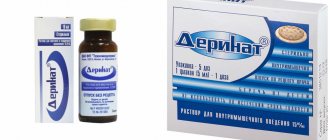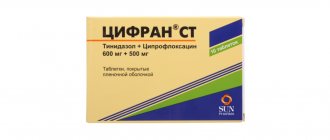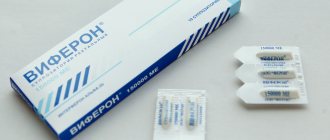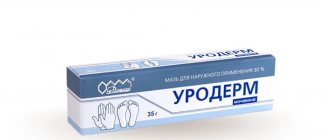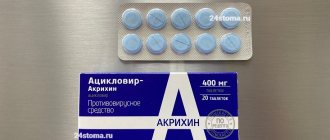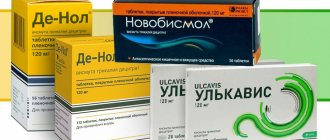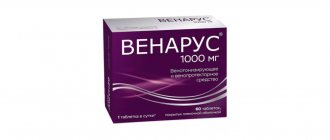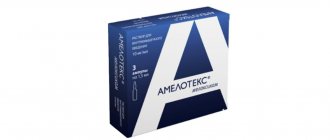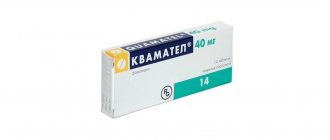Deterioration of memory, attention, and sleep problems are often associated with impaired cerebral circulation, due to which cells do not receive enough oxygen. For the prevention and treatment of such disorders, the effective drug Mexidol is used. It is available in the form of tablets and solution, which can be purchased with a doctor's prescription.
Release form and composition
The drug is available in several forms. Among them:
- Pills
The dosage and form of the drug are selected individually by the attending physician. Mexidol tablets are available in a dosage of 125 mg. Indicated for oral administration. They have a round shape, the color of the shell can vary from white to cream. Available in packs of 30 and 50 pieces.Active ingredient Mexidol: ethylmethylhydroxypyridine succinate 125 mg
Excipients: lactose monohydrate, sodium carmellose, magnesium stearate, talc, titanium dioxide, polyvinyl alcohol, macrogol polyethylene glycol.
- Injection
The solution for injection is contained in ampoules of 2 and 5 ml. The package contains 5 pieces. The solution is odorless and colorless. A yellowish tint is allowed. The composition of Mexidol depends on the form of release.Mexidol 50 mg/2ml
Active ingredient Mexidol: ethylmethylhydroxypyridine succinate 50 mg/2 ml. Excipients: sodium metabisulfite.
Mexidol 50 mg/5 ml
Active ingredient Mexidol: ethylmethylhydroxypyridine succinate 50 mg/5 ml. Excipients: sodium metabisulfite.
- Toothpaste
Mexidol toothpaste is available in a 65 g tube. The color of the drug depends on the type of paste. It can be pink, transparent, light green, white. The entire line of Mexidol toothpaste has a mint flavor. Active ingredient of Mexidol: ethylmethylhydroxypyridine succinate 65 mg. Excipients: sorbitol, polyethylene glycol, titanium dioxide, silicon dioxide, demineralized water, xanthan gum, sodium lauryl sulfate.
Mexidol tablets: description of the drug
The drug is available in the form of tablets that are taken orally and a solution for injection (injections are given both intramuscularly and into a vein). The active substance in both cases is ethylmethylhydroxypyridine in the form of succinate (125 mg in 1 tablet).
The product is a synthetic antioxidant that destroys free radicals - dangerous molecules that destroy cells. Due to this, a number of positive effects are observed:
- saturation of cells with oxygen;
- improvement of circadian rhythm;
- improved sleep;
- protection of lipid complexes;
- reduction of oxidative reactions;
- increased performance;
- improvement of metabolic processes;
- reduction of cholesterol in the blood.
The drug can only be purchased with a prescription. Store it in normal room conditions at a temperature of no more than 25 degrees. The place should be dark, without direct sunlight. The shelf life is 3 years from the date of production.
pharmachologic effect
The pharmacological effect of Mexidol is due to its antioxidant properties. The drug eliminates oxygen starvation of tissues, normalizes thinking and memory processes. The drug has a positive effect on the condition of blood vessels susceptible to atherosclerotic changes.
Pharmacodynamics
The drug has antihypoxic, nootropic, anticonvulsant, anxiolytic and stress-protective effects. Mexidol increases the body's resistance to damaging factors, including shock, oxygen starvation of tissues, alcohol intoxication, and cerebrovascular accident due to ischemia.
The drug helps improve blood circulation in the brain area, prevents blood thickening and thrombus formation.
Has antihypercholesterol effect. Reduces the concentration of total cholesterol and low-density lipoproteins.
Mexidol normalizes sleep processes, increases attention, and improves thought processes.
Taking the drug against the background of withdrawal syndrome helps reduce the manifestations of alcohol and neurotoxic intoxication, normalizes autonomic functions, and eliminates cognitive impairment.
The combined use of the drug Mexidol with tranquilizers, sleeping pills, antidepressants and anticonvulsants enhances the effect of the latter. This allows you to reduce the dosage of prescribed medications.
Pharmacokinetics
The drug is quickly absorbed. The maximum concentration is reached 45-50 minutes after administration. After entering the bloodstream, Mexidol is quickly distributed in organs and tissues. The drug stays in the body for about 4-5.5 hours, depending on the method of administration.
Metabolism of the drug occurs in the liver. Mexidol forms several metabolites and breaks down into components.
Excretion from the body is carried out with urine. Most of it is excreted in the form of metabolites, the rest unchanged. The half-life is approximately 2-3 hours.
Indications for use
The following indications for use of Mexidol in the form of a solution are distinguished:
- acute cerebrovascular accidents;
- traumatic brain injuries;
- manifestations of vegetative dystonia;
- open-angle glaucoma;
- anxiety and neurosis-like conditions;
- withdrawal syndrome due to alcohol abuse;
- drug intoxication;
- hypertonic disease;
- migraine-type headache;
- myocardial infarction in the acute phase.
Mexidol is prescribed as part of complex therapy for acute purulent lesions of the abdominal cavity requiring surgical intervention. This is, for example, acute pancreatic necrosis, peritonitis.
Indications for the tablet form of the drug are:
- consequences of cerebrovascular accidents;
- mild form of traumatic brain injury, as well as consequences;
- encephalopathy of various origins;
- as part of complex therapy of diseases of the cardiovascular system;
- asthenia;
- long-term exposure to psycho-emotional factors.
Mexidol for VSD
The indication for the use of Mexidol injections is vegetative-vascular dystonia. The drug helps improve blood circulation. As a result, headaches and dizziness are relieved. The dosage is selected individually depending on the severity of symptoms.
Mexidol for hypertension
The drug is part of the complex therapy of arterial hypertension. Mexidol normalizes metabolic processes that take part in the functioning of the cardiovascular system. The drug improves blood circulation, helping to stabilize blood pressure.
Mexidol for panic attacks
The drug has antihypoxic, nootropic and stress-protective effects. As a result, brain activity normalizes and the severity of anxiety symptoms decreases.
Mexidol for epilepsy
The anticonvulsant effect of the drug allows its use in the complex treatment of epilepsy. Mexidol normalizes cerebral circulation, improves thinking and memory processes. The dosage is determined by the attending physician depending on the severity of the condition.
Mexidol for oncology
Mexidol is included in the complex therapy of oncopathologies due to its antioxidant effect. The decision about the need to prescribe the drug is made by the attending physician. Some tumor formations exclude the possibility of taking Mexidol.
Mexidol for migraines
The disease tends to periodically worsen. Mexidol is used to prevent migraine-type headaches. The drug improves blood microcirculation processes in the brain area.
Mexidol for stroke
Cerebrovascular accidents and their consequences are included in the list of indications for taking the drug. Mexidol is used both in the acute period and as a prevention of relapse. Indications for the use of the drug in tablets are preliminary injection therapy.
Mexidol for multiple sclerosis
Used as part of complex therapy. Improves cerebral circulation, helps normalize cognitive functions.
Contraindications and side effects
In some cases, taking the drug is excluded:
- chronic kidney disease;
- liver dysfunction;
- individual intolerance to the active or auxiliary component;
- children under 15 years of age inclusive;
- pregnancy period (any stages);
- breastfeeding period.
The use of Mexidol can lead to some side effects:
- nausea, vomiting;
- itching;
- sleep disorders;
- increased fatigue;
- diarrhea;
- depression;
- high blood pressure;
- anxiety;
- migraine.
In these cases, the pills or injections should be stopped immediately. It is necessary to seek the advice of a specialist - perhaps the doctor will decide to replace the drug.
Directions for use and doses
The method of administration and dosage of Mexidol are determined by the attending physician depending on the disease and the severity of the condition.
Mexidol 5
Solution for injection, 5 ml. Before use, the drug must be diluted with isotonic sodium chloride solution. When using the drug as a jet, it is administered within 5-7 minutes. Drip administration requires a speed of 40-60 drops per minute. The daily dose of the drug should not exceed 1200 mg.
Mexidol 10
The solution for injection contains 5 ampoules of 10 ml each. The contents are dissolved using isotonic saline solution. Used when a long course of therapy is necessary. The drug is administered intravenously or intramuscularly, depending on the pathology and severity of the condition. In case of acute cerebral circulation, intravenous administration of the drug is prescribed at a dosage of 200-500 mg 2-4 times a day, followed by intramuscular administration of 200-300 mg 2-3 times a day.
Mexidol 2
5 ampoules per package contain 2 ml of the drug. The solution is used for intramuscular or intravenous administration by stream or drip. The contents of the ampoule are diluted with isotonic saline solution. The dosage depends on the pathology for which the drug is prescribed. The average dose is 200-500 mg 2-3 times a day IV or IM.
Mexidol 125
The use of Mexidol in tablet form is indicated for various conditions. The dosage is 125-250 mg 3 times a day. The maximum permissible daily dose is 800 mg. The duration of the course is determined by the attending physician depending on the disease and severity of the condition. On average it ranges from 14 days to 1.5 months. The course begins with 1-2 tablets per day. The dose is gradually increased until the clinical effect of the drug is achieved. Abrupt discontinuation of the drug is unacceptable. The dosage is gradually reduced until complete withdrawal.
Mexidol tablets
Mexidol is available in tablet form. The dosage of the drug is 125 mg. The tablets are film-coated and are in cell packaging. Indications for the use of the tablet form of the drug Mexidol are the recovery period after an acute cerebrovascular accident, a mild form of traumatic brain injury, encephalopathy of various origins, VSD, and mild cognitive disorders. Mexidol in tablet form is used as a continuation of injection therapy.
Mexidol solution
The solution for injection is available in volumes of 2, 5 and 10 ml. It has no color. A yellowish tint of the solution is allowed. The contents of the ampoules are dissolved using an isotonic sodium chloride solution. The drug is used for the treatment of acute cerebrovascular accident, severe traumatic brain injury and its consequences, cognitive disorders, acute myocardial infarction, and reducing the severity of symptoms of withdrawal syndrome due to alcoholism. Mexidol in the form of a solution is prescribed for acute cerebrovascular accident, severe traumatic brain injury, and acute myocardial infarction.
The drug is used to reduce the severity of withdrawal symptoms due to excessive consumption of alcoholic beverages. The dosage of the drug is selected by the attending physician individually depending on the pathology.
Mexidol in ampoules
The drug is available in glass ampoules of 2 and 5 ml. The package contains from 5 to 10 ampoules. Mexidol is used for intramuscular or intravenous administration. To obtain the finished solution, the contents of the ampoule are diluted with an isotonic sodium chloride solution. Mexidol is administered in a stream or drip. The dosage and route of administration are determined by the attending physician depending on the disease and severity of the condition. The maximum dose of the drug is 1200 mg per day
.
Mexidol injections
The dosage and frequency of use of Mexidol in the form of injections is determined by the disease for which the drug is prescribed. In case of acute cerebrovascular accident, intravenous drip administration of the drug 2-4 times a day is indicated. The dosage is 200-500 mg. The medicine is then administered intramuscularly. A similar method is used to treat traumatic brain injuries.
To relieve cerebrovascular insufficiency, drip administration of 200-500 mg of the drug is used 1-2 times a day. The course is determined by the severity of symptoms.
In the presence of dyscirculatory encephalopathy, Mexidol is administered intramuscularly at a dose of 400-500 mg 2 times a day.
Age-related impairment of cognitive functions is treated by intramuscular administration of the drug in a dosage of 100-300 mg.
How to inject Mexidol
It is recommended to administer the drug intravenously during the first 5 days of therapy. Then the transition to intramuscular use is allowed. To prepare the solution, the contents of the ampoule are dissolved in an isotonic sodium chloride solution. In some cases, the use of a 5% glucose solution is indicated.
Injection of the drug is carried out within 5-7 minutes. The most suitable speed for drip use of the drug is 40-60 drops per minute. The maximum dosage is 1200 mg per day.
Mexidol Dent (toothpaste)
The drug is available in the form of toothpaste. The tube contains 65 g of product. Indications for the use of Mexidol Dent are inflammation and bleeding of the gums. The drug helps accelerate the regeneration of damaged oral mucosa and normalizes blood microcirculation. The toothpaste does not contain preservatives or dyes. Due to its composition, it does not disturb the microflora of the oral cavity. Mexidol Dent is indicated for long-term use. To use, simply apply a small amount of paste to your toothbrush. Use sweeping movements to process the teeth. The gums are gently massaged. The course of use of the drug is not limited.
Mexidol White (toothpaste)
The release form of the drug allows its use in dental practice. The tube contains 65 g of product. Indications for the use of Mexidol White include the presence of plaque and inflammatory gum diseases. Thanks to the components included in the composition, the drug provides gentle cleaning of teeth and prevents the re-formation of plaque. Mexidol White protects teeth from aggressive agents that cause caries. The active ingredient in toothpaste prevents gum bleeding and reduces the severity of inflammatory diseases. Contraindication for use is individual intolerance to the components of the drug.
Instructions for use "Mexidol"
Tablets are taken 1 pc. 2 times a day. This is the minimum dose with which to start treatment. If there are no allergic reactions or other side effects, the dosage can be increased to 4-6 tablets per day. Those. in the future you can take 1-2 tablets maximum 3 times a day.
The total duration of therapy is determined by the disease:
- hangover – 5-7 days;
- drug addiction – 5-7 days;
- ischemia – up to 60 days.
Interaction
The drug is combined with many drugs used to treat somatic pathologies. Mexidol enhances the effect of antidepressants, anticonvulsants, antiparkinsonian, and benzodiazepine drugs. This allows you to reduce the initial dosage of prescribed medications.
Compatibility of Mexidol and Combilipen
In neurological practice, Mexidol and Combilipen are often prescribed for the treatment of various diseases. The drugs enhance each other’s effects, promoting rapid restoration of affected areas of the nervous system and improving tissue trophism. Combilipen is one of the vitamin-containing medicines. It contains B vitamins. The drug improves nerve conduction and helps normalize blood microcirculation. Vitamins and antioxidants are used to treat strokes, encephalopathies, polyneuropathies and other neurological diseases. The combined use of the drugs Combilipen and Mexidol normalizes emotional states and improves brain activity.
Compatibility of Mildronate and Mexidol
Mildronate has a general tonic effect on the body, eliminates the manifestations of hypoxia and restores damaged cells. The drug increases endurance. Indications for prescribing Mildronate include physical and psycho-emotional stress, the recovery period after surgery, treatment of alcohol dependence, and decreased performance. The simultaneous use of Mildronate and Mexidol is not contraindicated. Medicines are used as part of complex therapy for brain disorders.
Compatibility of Mexidol and Grandaxin
Grandaxin belongs to the group of anxiolytic drugs derived from benzodiazepines. Indicated in the presence of psycho-emotional disorders. For example, neuroses, mental disorders, withdrawal symptoms due to alcohol abuse, depression, menopause. Mexidol enhances the effect of benzodiazepines. Therefore, a dosage adjustment of Grandaxin may be required. This must be taken into account when prescribing these drugs simultaneously.
Compatibility of Mexidol and Eglonil
Eglonil belongs to the group of neuroleptics. Has an antipsychotic effect. The drug blocks dopamine receptors. Indicated in the presence of psychosis and schizophrenia. Taking Mexidol and Eglonil together can enhance the effect of the latter. This may require adjustment of the drug dose.
Mexidol and alcohol
Mexidol is used to treat withdrawal symptoms associated with alcohol abuse. The drug helps normalize brain activity, improve blood circulation, and remove toxins from the body. Indications for the use of Mexidol are alcoholic encephalopathy, polyneuropathy, manifestations of withdrawal syndrome, epileptic seizures due to an overdose of alcoholic beverages, intoxication syndrome. Prescribing the drug to dependent people helps speed up the recovery period. Taking alcohol together with Mexidol leads to the fact that the drug does not have time to restore damaged cells. As a result, the effect of the drug is reduced to zero. Further use of the drug is pointless.
Drug interactions
The drug can be used in combination with most medications. Moreover, in some cases, Mexidol enhances the medicinal effect of such drugs:
- antidepressants;
- benzodiazepine drugs;
- drugs against Parkinson's disease.
Simultaneous combination with alcoholic beverages is not allowed. It is known that Mexidol reduces the toxic effects associated with excess amounts of ethyl alcohol.
Comparison with other drugs
Analogs of Mexidol in terms of their effect include Mexiprim Astrox, Medomexi, Actovegin, Cerakson, Picamilon, Cavinton.
Mexidol or Mexiprim?
Mexiprim is one of the neuroprotectors. Available in tablet form and also as a solution for injection. The drug helps improve blood microcirculation, has a nootropic effect, and helps increase the body's resistance to psycho-emotional overload. Mexiprim is used to treat convulsive and withdrawal symptoms associated with alcohol abuse. Mexidol is the original drug, Mexiprim is a generic. According to research, Mexidol is absorbed more quickly into the gastrointestinal tract; its shell contains no preservatives or insoluble substances. Among the components of Mexiprim there is a preservative, the presence of which increases the possibility of developing individual intolerance to the drug.
Mexidol or Astrox?
Astrox is a generic version of the drug Mexidol. The drugs have the same active ingredient. Accordingly, the medications have identical effects. The difference between drugs lies in the manufacturing technology, excipients, release form and the quality of the purification of raw materials. These factors affect the bioavailability of the drug. Mexidol has a larger number of release forms. This variety allows you to select the required dosage depending on the disease and severity of the condition. The number of side effects of Astrox is significantly greater than that of Mexidol.
Mexidol or Medomexi?
Mexidol and Medomexi belong to the group of nootropic and antioxidant drugs. The action of the drugs is identical. The composition contains one active ingredient. Medomexi is an analogue of Mexidol. The difference between them lies in the total cost of the drug.
Mexidol or Actovegin?
Actovegin improves microcirculation of blood in the brain, accelerates healing processes, and increases the body's endurance in conditions of oxygen starvation. Actovegin is prescribed for cerebrovascular accidents, polyneuropathy, distal angiopathy due to diabetes mellitus. The drug promotes rapid tissue regeneration in wounds, abrasions and burns. Available in tablet form, as a solution for injection and ointments for external use. The differences between Mexidol and Actovegin lie in their mechanism of action. Unlike Mexidol, Actovegin has regenerating properties. Mexidol has a wider range of indications. Actovegin is approved for use during pregnancy and lactation. Often both drugs are prescribed as part of complex therapy for various diseases.
Mexidol or Ceraxon?
Ceraxon is one of the nootropic drugs. Used to treat acute cerebrovascular accident. The drug allows you to slow down the growth of the lesion for several hours. This time is enough to transport the patient to the hospital. Cerakson is prescribed during the rehabilitation period after a stroke, to normalize the condition after traumatic brain injury. Ceraxon and Mexidol are complementary drugs. They are used as part of complex therapy for brain disorders.
Mexidol or Picamilon?
Picamilon is a nootropic drug. Promotes the expansion of blood vessels in the brain. Indications for the use of the drug are cerebrovascular accident, withdrawal syndrome, encephalopathy of various origins, increased anxiety and irritability, severe migraine-type headaches. Unlike Mexidol, Picamilon is approved for use in school-age children. The medicine is used to increase brain activity.
Mexidol and Picamilon are complementary medicines. Their combined use improves the prognosis and speeds up the recovery period.
Mexidol or Cavinton?
Cavinton has antioxidant and antihypoxic effects and reduces the possibility of blood clots. Indicated as part of complex therapy for cerebrovascular accidents, encephalopathy of various origins, increased blood pressure, and pathology of the vestibular apparatus. The simultaneous use of Mexidol and Cavinton is not contraindicated. Medicines are considered complementary, but they should be taken at different times of the day.
Analogues of "Mexidol"
Mexidol analogues include a number of prescription and over-the-counter drugs:
- "Glycine":
- "Cerekard";
- "Neurox";
- "Combiplen";
- "Caviton";
- "Hypoxen";
- "Armandine";
- "Tenoten";
- Astrox;
- "Tryptophan";
- Rilutek and many others.
The most popular analogues of Mexidol tablets are:
- "Armadin" - also available in the form of solution and tablets. They are more expensive - for example, tablets can be purchased for at least 300 rubles, ampoules for injections - from 500 rubles. The medicine is taken to improve memory, especially in older patients. The product also helps improve performance and does not cause drowsiness.
- “Glitsed” is a sedative drug that can be purchased at a price of 900 rubles. Improves blood supply to the brain, helps with recovery from traumatic brain injuries, and is used to treat a number of diseases of the nervous system.
- “Antifront” is a blood pressure stabilizer that helps cope with headaches and dizziness. The price starts from 1500 rubles.
- "Actovegin" is often prescribed in parallel with "Mexidol" because it has the same properties.
